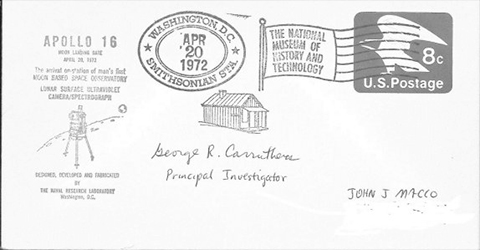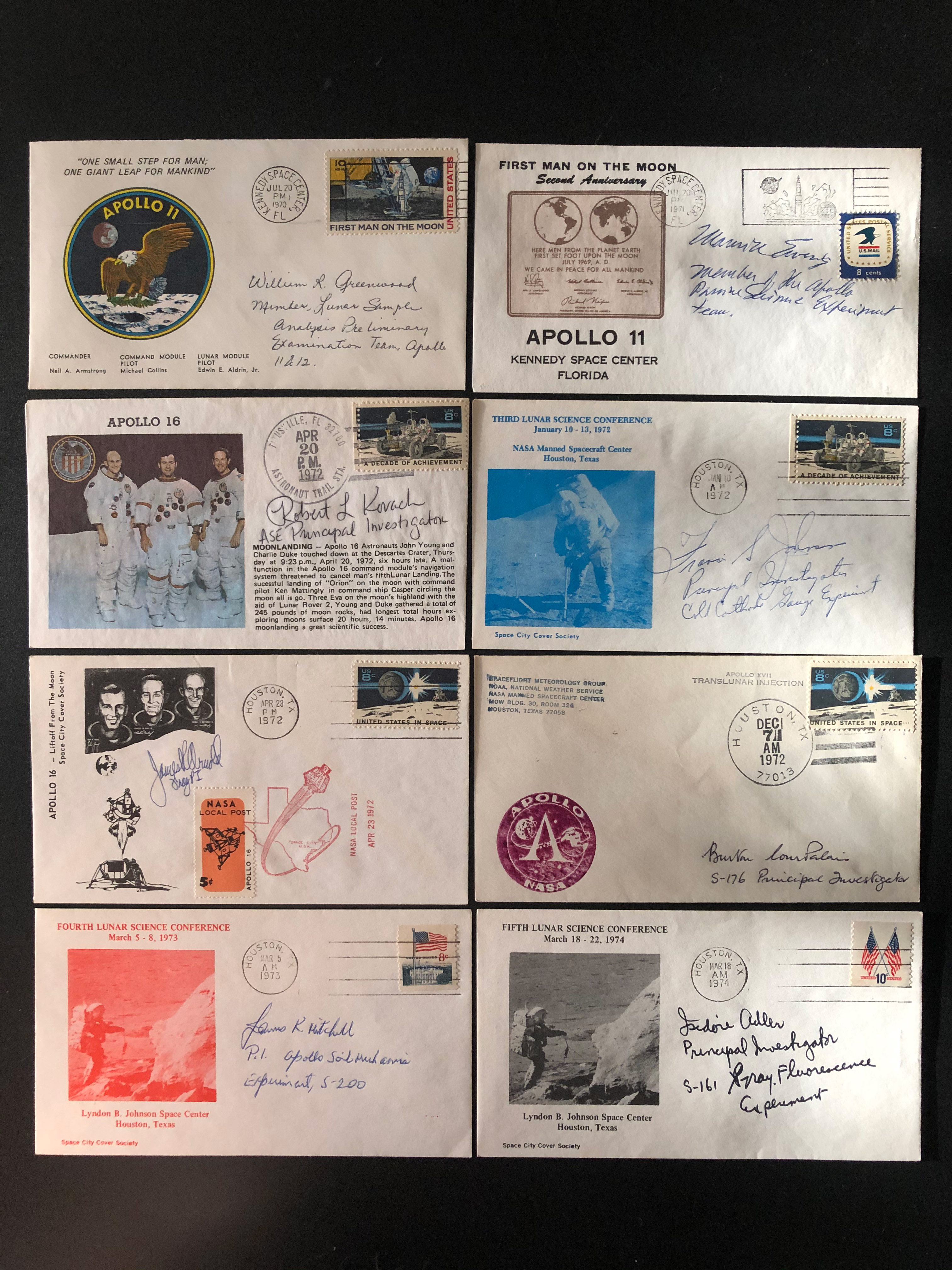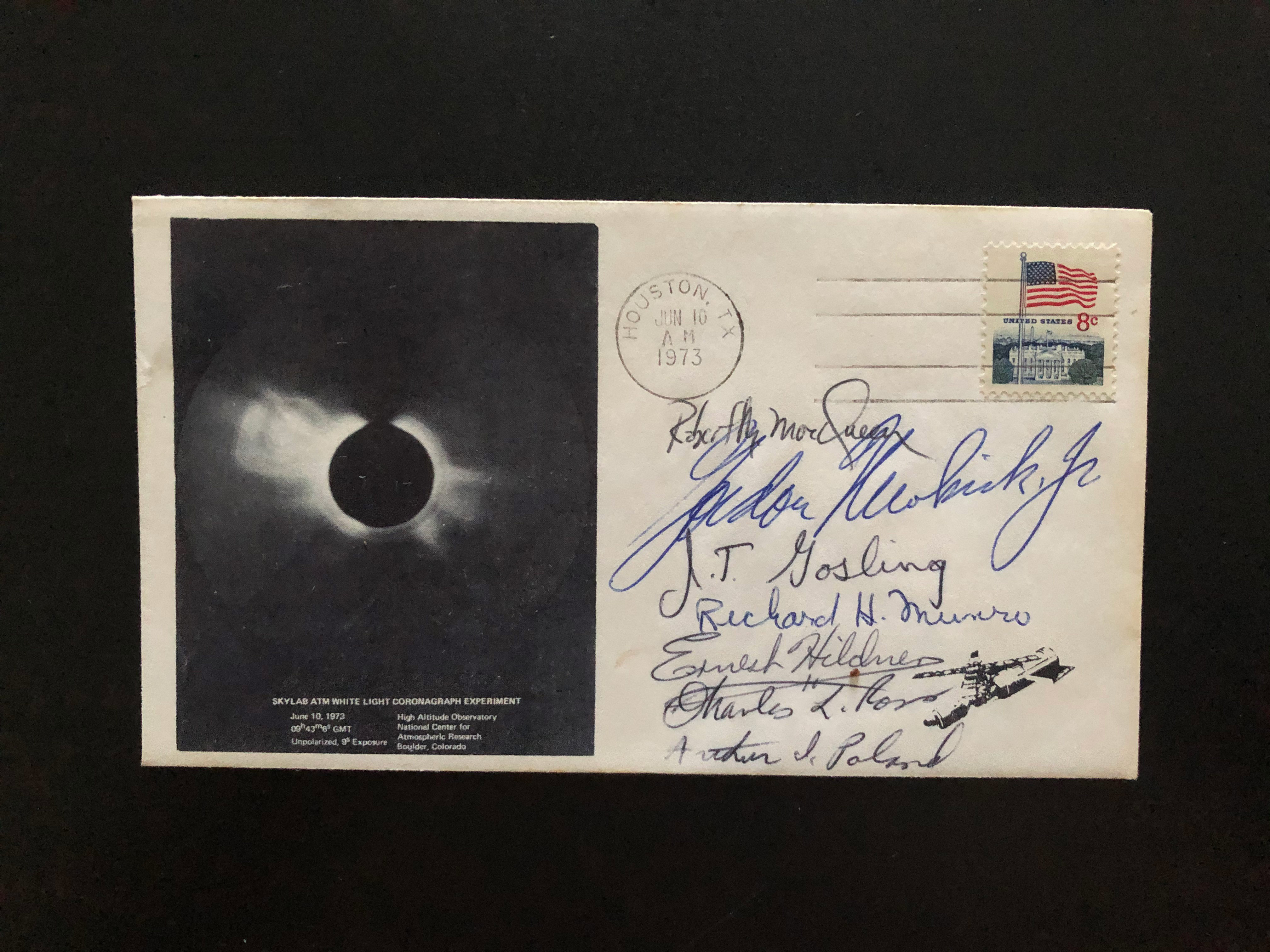posted 10-04-2019 09:15 AM




During the early 1970's, like John, I also tried to contact many of the Apollo program scientists or Principal Investigators (PI's) that had their scientific instruments and experiments flown to the moon and used on the lunar surface.John's depiction here is one of my favorite non-astronaut signed cover-types. The Apollo 16 postal cover, with an appropriate and informative blue rubber stamp cachet at bottom left, is postmarked at Washington, D.C.'s Smithsonian Station on the day of Apollo 16's moon landing at the Descartes Highlands.
One of the world's outstanding astrophysicists, Dr. George Carruthers of the U.S. Naval Research Laboratory, Washington, D.C., autographed a couple of the exact-same covers for Apollo 16. Mine is the same as John's, but with an Apollo 15 "A Decade of Achievement" stamp added to it. It was Carruthers that had designed and developed the lunar tripod-mounted special camera and electronic telescope to help reveal the mysteries of space and of our own Earth's atmosphere — but from a moon-based observatory!
Veteran Astronaut John Young, commander of the nation's fifth lunar landing mission, used the telescope while on the moon during Apollo 16 to photograph star clouds, nebulae, and Earth's outermost atmosphere from the moon. It was the first telescope, or man's first on-the-moon space observatory, used to make astronomical observations from the surface of another planetary body.
While there are many astronaut autograph collectors and those of noted Space Age officials, there are not too many of us with "extended" autograph collections of perhaps "lesser known" personalities, such as Dr. Carruthers. But their many contributions to our national space efforts in science and research should not go unnoticed. Perhaps an autograph collection that includes Carruthers along with many other PI's, in all fields of space exploration, may help to focus or draw attention to their outstanding achievements in their designated scientific and research study areas.
Depicted below are a few other signed Apollo-related covers. The two Apollo 11 covers are signed by scientists of the first lunar sample examination and passive science experiment teams for man's first lunar landing. A few more shown have the signatures of other Apollo PI's such as top chemist Dr. James Arnold of the University of California at San Diego. He was the PI for Apollo Experiment S-160, the Gamma Ray Spectrometer Experiment, that had been conducted on Apollos 15, 16 and 17.
One of the nation's best geophysicists, Dr. Robert Kovach, at Stanford University in California, was the PI for the ALSEP Active Seismic Experiment that was activated on the lunar surface by the crews of Apollos 14 and 16.
Still another, Dr. James Mitchell, was the PI for an Apollo soil mechanics experiment (S-200) that had been deployed during the last four lunar landing flights. This particular experiment study was unique among the experiments assigned to the Apollo program in that the results had both science and engineering applications. Much had been learned from S-200 about the nature and behavior of lunar soil.
But there were many more Apollo PI's of which I have tried to contact, while most were successful, a few never did respond. Of the dozens of Apollo PI's, though, I have always wondered if anyone was able to acquire a full set of signed covers by all the primary PI's from the Apollo program.
In addition to Apollo, going forward to 1973, of course we have a whole slew of science and astronomy experiments that were conducted aboard Skylab, America's first manned space station from 1973-74. Below is a full-team signed Skylab cover in June 1973 by the Skylab Apollo Telescope Mount (ATM) White Light Coronagraph Experiment team headed by Dr. Robert MacQueen, the top PI of Skylab Experiment S052, at the High Altitude Observatory in Boulder, CO. The cachet itself depicts an image from the same experiment study.














